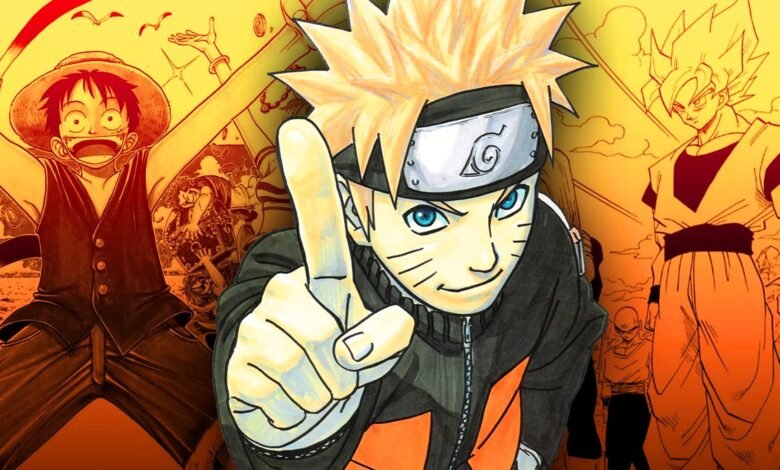The Impact of Manga on Global Pop Culture

What is the Impact of Manga on Global Pop Culture? Manga, originating from Japan, is a distinctive form of comic art characterized by its unique style, narrative structure, and cultural significance.
The term “manga” refers to a wide range of comic books and graphic novels that cover various genres, including but not limited to action, adventure, romance, fantasy, science fiction, horror, mystery, and slice of life.
Unlike Western comics, manga is typically read from right to left, following the traditional Japanese reading direction.
EXPLORE THE CONTENTS
Evolution of Manga
The evolution of manga can be traced back to ancient Japanese scrolls and picture books, which often depicted historical events, myths, and folktales through visual storytelling.
Over time, manga evolved into serialized publications in the 20th century, with notable pioneers like Osamu Tezuka contributing to its modern format and popularity.
Tezuka’s works, such as “Astro Boy” and “Black Jack,” revolutionized manga by introducing complex narratives, expressive characters, and cinematic panel layouts.
Related: The Evolution of Iron Man: From Comics to Movies
Impact of Manga on Global Pop Culture
Manga’s influence on global pop culture is profound and multifaceted. It has transcended cultural barriers, captivating audiences worldwide with its diverse themes, engaging narratives, and visual artistry.
The rise of manga’s popularity outside Japan can be attributed to several factors:
- Adaptations into Anime: Many popular manga series are adapted into anime (animated television shows or films), further expanding their reach and fanbase. Iconic franchises like “Naruto,” “One Piece,” “Dragon Ball,” and “Attack on Titan” have achieved international acclaim through their anime adaptations.
- Localization and Translation: The localization and translation of manga into multiple languages have made it accessible to non-Japanese audiences. Publishers and distributors ensure that manga is translated accurately while preserving cultural nuances and artistic integrity.
- Digital Platforms: The digitalization of manga has made it easier for fans worldwide to access and read their favorite titles. Online platforms, such as Crunchyroll Manga, ComiXology, and Shonen Jump’s digital library, offer a vast selection of manga titles for digital consumption.
- Fan Communities: Manga’s global fan communities play a crucial role in promoting and sharing content across social media, forums, and conventions. Events like Comic-Con and Anime Expo attract thousands of fans who celebrate manga, anime, cosplay, and related pop culture phenomena.
Diversity in Manga Themes and Genres
One of manga’s strengths lies in its diverse range of themes and genres, catering to a broad spectrum of interests and demographics. Some popular manga genres include:
- Shonen: Targeted primarily at young male readers, shonen manga often features action-packed storylines, coming-of-age themes, and battles between heroes and villains. Examples include “My Hero Academia,” “One Piece,” and “Naruto.”
- Shojo: Geared toward young female readers, shojo manga explores romance, relationships, friendship, and personal growth. Worldwide audiences adore shows like “Sailor Moon,” “Fruits Basket,” and “Ouran High School Host Club.”
- Seinen: Aimed at adult male audiences, his manga delves into mature themes, complex characters, and societal issues. Series like “Berserk,” “Ghost in the Shell,” and “Monster” are renowned for their depth and philosophical exploration.
- Josei: Targeting adult female readers, josei manga focuses on realistic portrayals of relationships, career challenges, and everyday life experiences. Works such as “Nana,” “Paradise Kiss,” and “Honey and Clover” resonate with a diverse audience.
Manga’s Role in Fostering Creativity and Imagination
Manga’s immersive storytelling, vivid artwork, and diverse characters inspire creativity and imagination among readers and aspiring artists. Many manga enthusiasts are motivated to create their comics, fan art, and original stories, contributing to a vibrant and dynamic creative community.
Manga’s Impact on Visual Arts and Design
The distinctive art style of manga, characterized by expressive characters, dynamic poses, exaggerated emotions, and intricate backgrounds, has influenced visual arts and design globally. Manga’s impact can be seen in various creative fields, including:
- Animation (Anime): Manga-inspired aesthetics are prevalent in anime, where detailed character designs, vibrant colors, and fluid animation techniques bring manga narratives to life on screen.
- Graphic Design: Manga’s bold lines, use of negative space, and graphic storytelling techniques have influenced graphic designers, illustrators, and digital artists to create visually compelling artwork and layouts.
- Fashion and Merchandise: Manga-themed fashion, accessories, and merchandise, ranging from clothing to collectibles, appeal to fans who want to express their love for their favorite manga series.
- Video Games: Manga’s art style and storytelling elements are often integrated into video game graphics, character designs, and narrative sequences, enhancing the gaming experience for players.
Manga’s Contribution to the Global Entertainment Industry
The success of manga adaptations into anime, films, merchandise, and video games has contributed significantly to the global entertainment industry’s growth and revenue. Manga franchises generate substantial sales and licensing deals, attracting investments from major entertainment companies and streaming platforms.
Manga and Technology: Digitalization and Accessibility
The digitalization of manga has revolutionized how fans consume and interact with content. Digital platforms offer benefits such as:
- Convenience: Readers can access manga anytime, anywhere, using smartphones, tablets, e-readers, and computers.
- Variety: Digital libraries provide a vast selection of manga titles, including classics, new releases, and exclusive content.
- Localization: Digital platforms offer translated versions of manga in multiple languages, expanding their global audience reach.
- Interactivity: Some digital platforms incorporate features like reader comments, ratings, and interactive panels, enhancing the reading experience.
Global Reach and Fanbase of Manga
Manga’s global reach extends to diverse regions, cultures, and demographics, creating a shared passion for storytelling, artistry, and fandom. International events, conventions, and online communities unite manga enthusiasts, fostering cross-cultural exchange and collaboration.
Manga’s Influence on Other Media Forms
Manga’s influence transcends its original medium, impacting various media forms and creative industries:
- Literature: Manga-inspired novels, light novels, and graphic novels blend prose storytelling with manga-style illustrations, appealing to readers who enjoy hybrid formats.
- Film and Television: Live-action adaptations of manga series, such as “Death Note,” “Fullmetal Alchemist,” and “Attack on Titan,” bridge the gap between manga and mainstream cinema, attracting new audiences.
- Music and Pop Culture: Manga-themed music, concerts, merchandise collaborations, and cosplay events contribute to manga’s integration into broader pop culture trends and movements.
- Advertising and Branding: Manga-inspired marketing campaigns, collaborations with brands, and promotional tie-ins leverage manga’s visual appeal and storytelling techniques to engage consumers and create brand affinity.
Criticism and Controversies Surrounding Manga
Despite its widespread popularity, manga has faced criticism and controversies related to:
- Content: Some manga series have been criticized for graphic violence, sexual content, sensitive themes, and portrayal of cultural stereotypes.
- Censorship: In certain regions, manga content may be censored or restricted due to regulatory guidelines or cultural sensitivities, leading to debates about artistic freedom and censorship in the media.
- Cultural Appropriation: The appropriation of cultural elements or themes in the manga has sparked discussions about respectful representation, authenticity, and ethical considerations in storytelling.
- Impact on Youth: Concerns have been raised about the potential impact of mature or controversial manga content on young readers’ perceptions, values, and behavior, prompting discussions about age-appropriate content and parental guidance.
- Legal issues: The manga industry faces difficulties with copyright infringement, piracy, and intellectual property rights violations, necessitating legal action to safeguard creators’ works and ensure fair compensation.
Future Trends and Innovations in Manga
Looking ahead, several trends and innovations are shaping the future of manga and its impact on global pop culture:
- Digital Innovation: Continued advancements in digital technology, augmented reality (AR), and virtual reality (VR) may revolutionize how manga is created, distributed, and experienced. Interactive manga apps, immersive storytelling formats, and personalized reader experiences could redefine the manga landscape.
- Global Collaborations: Collaborative projects between international creators, studios, and publishers may lead to cross-cultural manga adaptations, original co-productions, and collaborative storytelling initiatives, fostering cultural exchange and creativity.
- Diversification of Themes: As audience preferences evolve, manga creators are exploring diverse themes, genres, and storytelling approaches to cater to a global audience’s interests and perspectives. Social issues, diversity representation, and inclusive storytelling are becoming increasingly prevalent in manga narratives.
- Innovative Storytelling Techniques: Experimentation with narrative structures, non-linear storytelling, multimedia integration, and interactive storytelling elements could offer readers new ways to engage with manga content and participate in immersive storytelling experiences.
- Sustainable Practices: The manga industry is adopting sustainable practices, eco-friendly production methods, and digital initiatives to reduce environmental impact, conserve resources, and promote responsible consumption of manga content.
Conclusion: The Enduring Legacy of Manga in Global Pop Culture
In conclusion, manga’s impact on global pop culture is far-reaching, encompassing artistic expression, storytelling innovation, cultural exchange, and fan engagement. Its ability to transcend linguistic, cultural, and geographical boundaries has made it a cultural phenomenon with a lasting legacy.
From its origins in Japan to its global influence across media, entertainment, and creative industries, manga continues to inspire, entertain, and connect audiences worldwide. As technology evolves, storytelling techniques evolve, and audience preferences evolve, manga’s role in shaping the future of storytelling and creativity remains significant and enduring.
Through diverse themes, engaging narratives, expressive artwork, and a passionate fanbase, the manga continues to captivate hearts, stimulate imaginations, and leave an indelible mark on the ever-evolving landscape of global pop culture.
